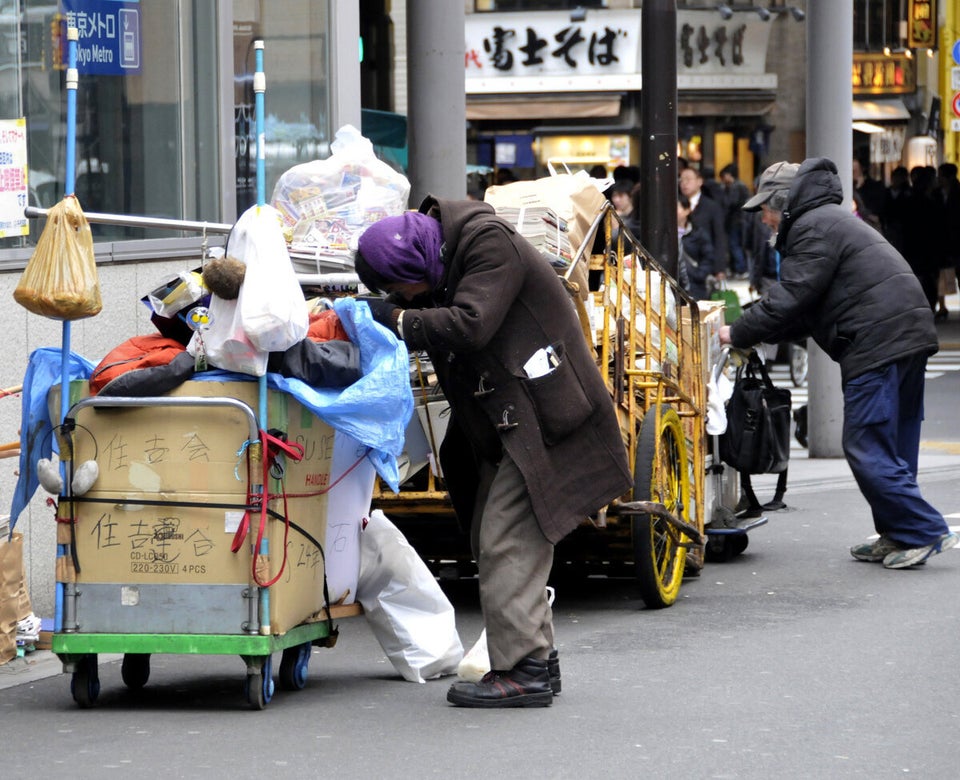A moneylender sees the light, discovering a spirit of giving and generosity. It's a classic Christmas tale of redemption -- and redistribution -- but this year the convert in question appears to be one of Canada's biggest banks. In a recent report, economists at TD bank laid out "The Case for Leaning Against Income Inequality" pointing out the dangers of the widening divide, and giving some strong suggestions on how to turn the tide.
It's a timely message, as another new report, this one from the Broadbent Institute, shows that the majority of Canadians desire action on income inequality, despite underestimating just how unbalanced the distribution actually is. This widely held appetite for redistribution is particularly interesting, given that it's been a dirty word for many years, abandoned by parties of all ideological leanings.
While no one was talking about it, a massive redistribution was happening right under our noses, as incomes and resources became increasingly concentrated in the hands of a smaller and smaller percentage of Canadians. The richest 20 per cent now controls over 67.4 per cent of all wealth in the country. This redistribution happened while we were being told that inequality was of no great concern; so long as the economy was growing, everyone's life circumstances were improving.
That assumption has been challenged in recent years, in particular as it has become clearer that income inequality leads to worse health outcomes. This is most true for those who make the least. People living in poverty often have life expectancies 20 or more years less than the wealthiest members of society. But the health effects of inequality are not confined to the most disadvantaged. As Richard Wilkinson and Kate Pickett described in their 2009 book, The Spirit Level, people living in less equal countries suffer from worse physical and mental health, even if they are at or near the top of the socioeconomic scale.
It is perhaps discouraging that the health effects of inequality have not been sufficiently concerning to drive decision-makers to change policies, but a new kind of evidence may make a greater difference. It's not only the people in unequal countries that are sicker, it's their markets as well.
The OECD reports that income inequality is at it's highest level in 30 years, and that economic growth has been slowed by as much as ten percent in some countries as a result. A 2014 IMF study showed that redistributive policies through tax and transfers not only do no harm to the economy, but can improve performance in the long-term. In fact, it appears that public investment in child care and other services are far more effective in creating jobs and increasing economic growth than corporate or income tax cuts.
Returning to the TD report, they recommended a variety of key public investments to reduce inequality, including affordable housing, health and social services, early childhood development, and decreasing barriers to all levels of higher education, from skills training to professional colleges. These are encouraging comments to see, as they also address key social determinants of health, meaning they are not only good for the economy, but more importantly good for Canadians.
Overall, these are excellent recommendations. One drawback was a focus on means-testing the recommended programs. While this can be a way to decrease the overall cost of social programs, it can also erode the public support needed to maintain them, and at the same time fail to reach the "hidden poor", people who are earning middles class wages but unable to keep up with rising costs. Better would be a proportionate universality approach, as described in Sir Michael Marmot's Fair Society, Healthy Lives report, which would see social benefits delivered to all Canadians but increased support to those in greater need.
The most glaring gap, however, lies in the recommendations for how to pay for the social investment required to decrease barriers to success. There is a passing and unenthusiastic reference to increasing income taxes on the top 1 per cent of Canadian earners, and complete silence on corporate taxation, non-salary compensation or CEO salaries. One naturally questions calls for greater sharing that don't include recognition of having benefitted from maldistribution, and an offer to pitch in.
Still, in keeping with the generosity of the season, and the spirit of the report, it's extremely encouraging to see this shift in thinking coming from so may directions. When economists working for one of the Big 5 banks -- Canada's largest lender in fact -- comes out with a strong position on income inequality it's indicative of how much this has moved from being a fringe concern to economic orthodoxy. Last year at this time we heard Conservative Cabinet minister James Moore channel his inner Scrooge, implying that the poverty of his neighbour's child was none of his concern, and neither was the poverty of Canadians any business of the federal government. How delightful to hear a message far more in keeping with the spirit of the season, however unlikely the source.
A version of this article appeared in the Toronto Star
ALSO ON HUFFPOST:
